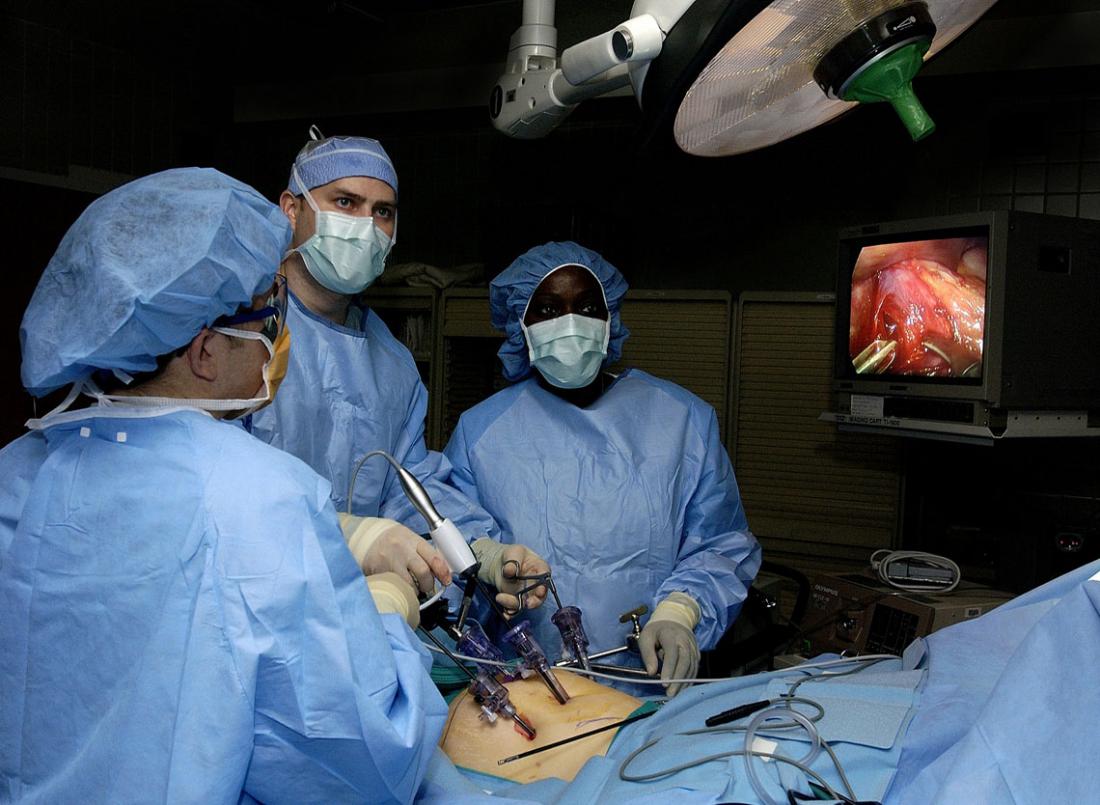Minimally invasive surgery (MIS), also called laparoscopic surgery, bandaid surgery, or keyhole surgery, is a modern surgical technique in which operations in the abdomen are performed through small incisions (usually 0.5–1.5 cm) as opposed to the larger incisions needed in 'standard' surgery. © Creative Commons, Samuel Bendet
Minimally invasive surgery (MIS) involves indirect observation of the surgical field through endoscope or similar devices and is carried out through the skin, through body cavities or anatomical openings. Interventional Radiology (IVR), is one such MIS procedure and is performed using image guidance: tiny tubes (catheters) or needles are inserted through the body to the area of interest. The IVR procedures allow two types of treatment: treatment through the blood circulatory system and non-blood circulatory system, here we are looking at the development of a telesurgical system for catheter guide in the blood circulatory system.
To prevent the risks, there has been considerable interest in using Master Slave System (MSS), a telesurgical system for catheter guide during IVR. We propose using a fail-safe telesurgical system in interventional radiology. The Master Slave Mechanism has high precision performance and upon detection of any abnormality in position or command it will stop the procedure as a safety measure. The Master Slave System (MSS) for catheter guide in blood circulatory system consists of a master robot handle by surgeon, a slave robot placed near the patient and a close-loop control system. The elements involved are a surgeon, blood vessel of patient in contact with the catheter held by the slave robot, and a control system adjusting the parameters according to the influences from the environment. The MSS is indeed a mediator between the surgeon and the patient; therefore the system should be reliable ensure the safety of the patient.
As such, a fail-safe catheter guide system has to be developed. During the conceptual design phase, five key aspects for a fail-safe catheter guide system was specified. These aspects included the requirements, functions, environment, active structure and behavior of the system.The relevant spheres of influence were identified. Undesirable influences disturbing the operation of the system were marked as disturbance variables.This aspect describes the system elements, their attributes and the relationship between the elements of the system.
The aim is to define a system configuration for a safe and reliably guided catheter based on the function of MSS in IVR procedure and environmental factors. The IVR is a complicated procedure; therefore as the first step in the development of MSS for the catheter guide, the development of the MSS started from guiding the catheter in the vessel until it reaches the area of interest. The surgeons have to carry out some medical procedures before using the MSS which involves making a small incision in the patient’s body and inserting the catheter into the blood vessel and after that then the surgeon manipulates the master tool. The prototype development consists of a fail-safe catheter guide system. This section exemplifies the prototype development of an integral element of the catheter guide system, i.e. the slave system.
We have developed a slave system with two degrees of freedom (DOF) using two actuators as the positions control. A roller mechanism has been chosen to generate infinite thrust movement of the catheter. In order to prevent the intervention, both the DOF must be independent and the catheter grasp mechanism needs to be fixed with one DOF only. Most of the parts were made of aluminium except for the thrust mechanism case, which was made from ABS resin using stereo lithography. Last but not least, we aim to build a prototype of the Master Slave System that consists of a master tool, a slave system and a complete control system. Once the prototype is completed, an experiment using MATLAB Simulink or an in-vivo experiment would be conducted. In this report, the current state of the prototype development for a slave system for the catheter guide system has been explained.
For more information please contact:
Noor Ayuni Binti Che Zakaria [email protected]
DR.-Ing Low Cheng Yee [email protected]



